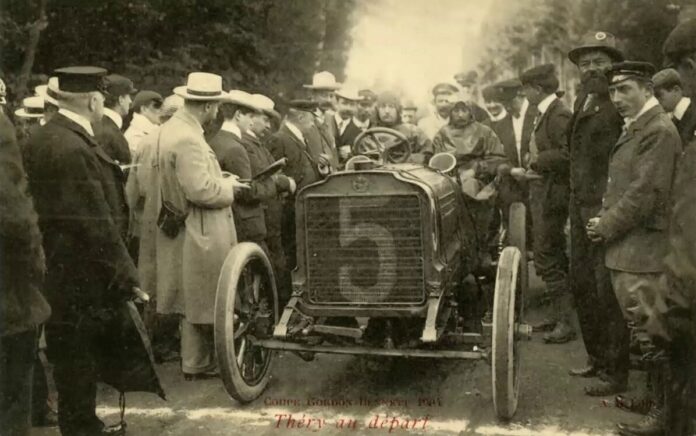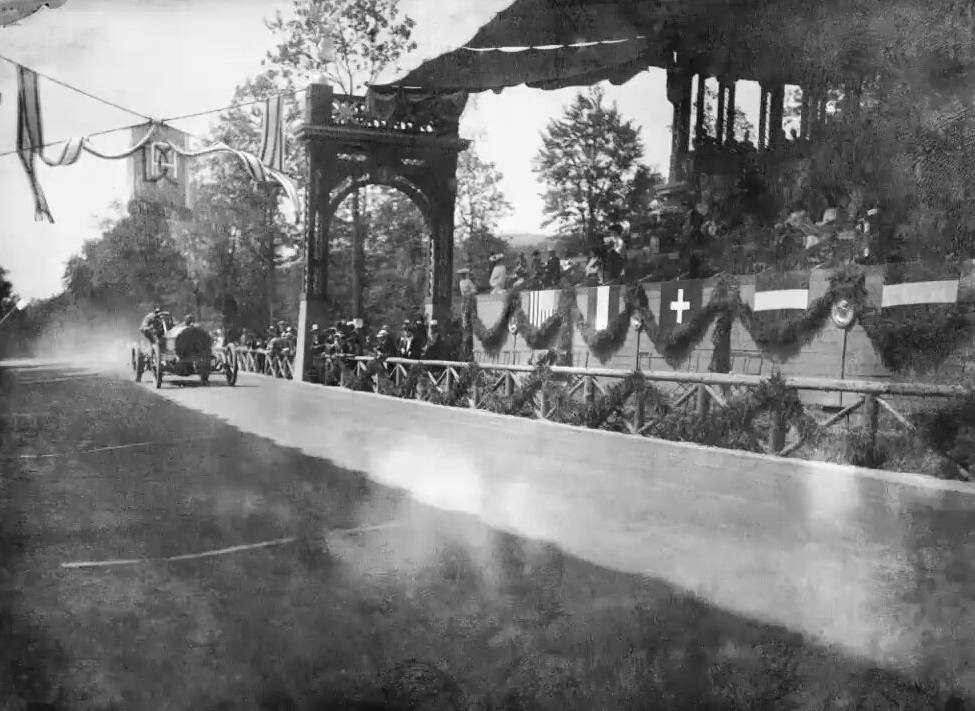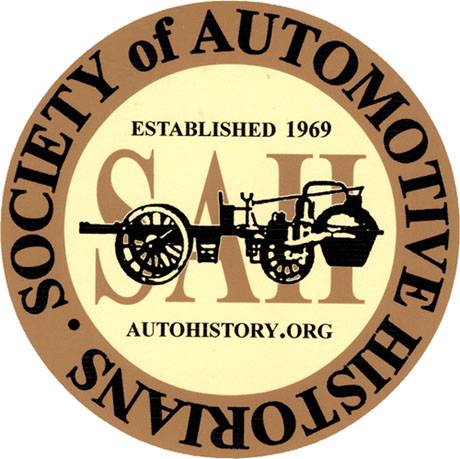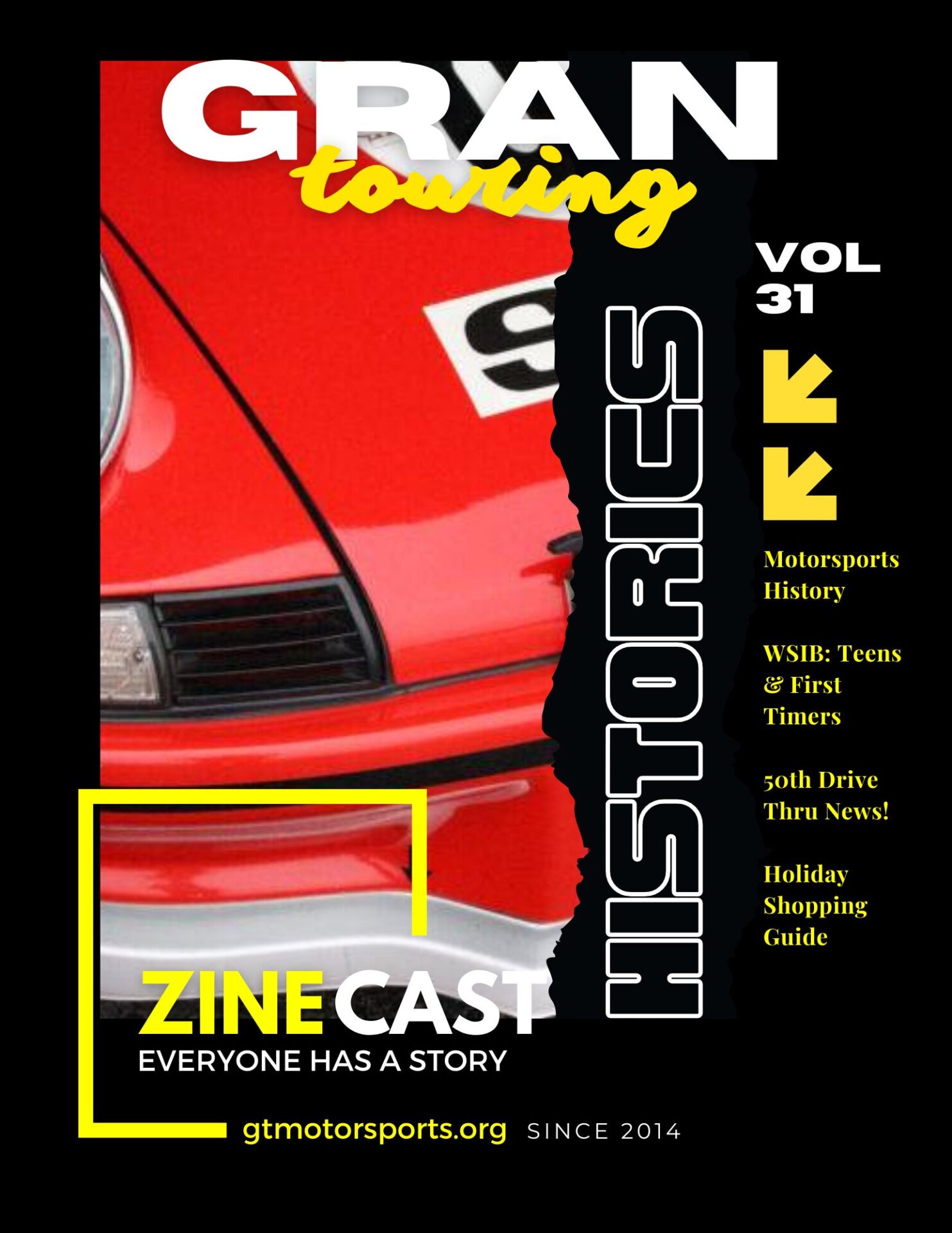[00:00:00] Brake Fix’s History of Motorsports series is brought to you in part by the International Motor Racing Research Center, as well as the Society of Automotive Historians, the Watkins Glen Area Chamber of Commerce, and the Argettsinger family. The Gordon Bennett Cup by Dr. Pal Nagyesi. Pal Neghesi is an award winning automotive historian, publisher, editor, and museum professional.
He is currently editor of Rare and Unique Vehicles magazine, which won the 2022 Richard Brigham Award from the Society of Automotive Historians. He’s a consultant to the Institute for Digital Culture at the University of Leicester, and a lecturer at the University of Hungary. Over the years, he authored many different books on the history of the Hungarian motoring industry.
He’s also been the publisher of such books as Thomas Ulrich’s 1902 Diditrik and the Paris Vienna Race and the Alice mit Motor, Die Standard Gutbräude Story, which won the 2023 Kugno Award for Books in Language Other Than English from the [00:01:00] SAH. He’s also an advisor to private collectors and museums in Hungary, Germany, and the Netherlands.
The Gordon Bennett Cup, held for cars between 1900 and 1905, was the first international racing series. Stemming from an idea by American newspaper magnate James Gordon Bennett Jr., the Gordon Bennett Cup was set to champion the international auto industry by allowing national automobile clubs representing France, Germany, Great Britain, Belgium, Austria, Switzerland, the United States, and Italy to nominate three entries each.
Naturally, with the growth of the industry, it became more and more difficult to find suitable candidates. By 1905, the industry became so diverse that it was impossible to hold on to the rules of the cup. So from 1906, the era of the Grand Prix started. This presentation will provide a short overview of each race, and a look at the most important racers and their cars.
Ladies and gentlemen, dear viewers, my name is Dr. Pála Négyesi. I’m a Hungarian born motoring historian, publisher, and author. [00:02:00] This presentation will be about the Gordon Bennett Cup, which put motorsport into an international context. It was the first organized motorsport event for a lot of different nations and A few months ago, we were in a fortunate position to learn a lot about this race, and I would like to share some of the things which we learned.
Some of you may know that I’m the editor and publisher of Rare and Unique Vehicles, which is a quarterly automotive history magazine which won the Richard Brigham Award from the Society of Automotive Historians. If you like interesting stories, this is the magazine for you. We cooperate with museums and collectors from time to time.
Last year, we published a book on the history of the Paris Vienna race, which happened in 1902, [00:03:00] which we did together with the Metropolitan Collection in the Netherlands. And that’s when I learned a lot about early motorsport, thanks to Thomas Ulrich. A lot of resources, books, and essays which have been published are not so reliable.
So when Dieter Dressel, owner of the Central Garage Museum, in Germany, Bad Homburg approached us with this idea that in 2024, it will be 120 years since the 1904 Gordon Bennett race started from Bad Homburg, there should be a book, there should be a website. So we put together a website and in the process, We have acquired a lot of photos, a lot of interesting materials, some of which I will show.
A little bit about Mr. Dressel, who’s an extremely nice private collector, and because of the [00:04:00] 1904 Gordon Bennett Cup, he amassed a huge collection of materials related to the event, which he was kind enough to share with us. And the Central Garage Museum, which was opened in 2007, in place of Opel dealership in Bad Homburg, hosts very nice temporary exhibitions.
The last one is about 120 years of Harry Davidson, but the museum featured various very interesting exhibitions. And Mr. Dressel was the president of the German Mercedes Benz Compressor Club this year when he retired. And he has a very nice private collection of very exciting vehicles like the Maykafer prototype from Josef Gans.
And he’s restoring the Schleierwagen, which was a Mercedes based streamlined German car from 1930. So together we built the Gordon Bennett Cup website, gordonbennettcup. racing, which features a lot of photos, some of those which have not been published [00:05:00] before, biography of the racers, short introduction to the cars, and a couple of other bits.
We have a complete index. What’s really interesting is if you look around the published resources you can see that in many cases there are a lot of mistakes and the mistakes are very easy to make in a race like the Gordon Bennett Cup because in part this was part of many cases of other races so for example in 1901 there was a Paris Bordeaux race the Gordon Bennett Cup was part of that in 1902 the Paris Vienna race and It’s part of that.
And from 1903 and 1904, there were elimination trials. So before the race, they selected who will participate. Over the years, some of these elimination trial participants morphed into career racers in the mind of some of the authors. There are several books on the Golden Bell Cup. One of the best known was written many years ago by Lord Montagu, [00:06:00] together with Michael Sedgwick, who was the librarian at the Beauty Museum, and it’s a great book, but we went back to the contemporary race reports featured in various German English and French magazines to try to get a complete picture of what really happened.
What was the importance of the Gordon Bennett Cup? Why is it relevant today? Because it is still relevant today. The origins of the Gordon Bennett Cup go back to 1899. When Alexander Winton, who was the biggest manufacturer of motor cars in America at the time, decided to challenge the French manufacturers, claiming that his cars would beat any French cars over a distance of 1, 000 miles.
His call was heard, and one of the French racers, Fernand Charon, accepted the challenge and deposited 2, 000 francs with the Paris office of the [00:07:00] New York Herald. The New York Herald was a very well known daily, which was owned by James Gordon Bennett Jr., who was a very well known playboy, sportsman, and newspaperman.
He took over from his father in the 1860s. He was the one who sent Henry Stanley to find Dr. David Livingstone in Dark East Africa. In 1887, he set up the European version of the New York Era, and he was also a technological innovator, introducing new techniques to French and European media. And he was also creating news, making news through the promotion of new sports and competitions.
He constantly sought new ways of speeding up news gathering and news distribution on an international scale. This race between Winton and Sharon never took place, but it gave Gordon Bennett an idea that there should be a race, after all, between [00:08:00] the great nations. And you have to remember. that this was the time when national identities were forged, in many cases through wars, so this was a more calm and restrained way to share and highlight national identity.
But, as is often the case, some people took it too far, like The second, the German emperor who went out of his way to make the 1904 extremely spectacular. He spent 95,000 race mark, which is about three 40 euros on the grand stand alone for. Gordon Bennett set up an international cup, commissioned very well known French jeweler André Aoukoc to design this beautiful cup, which is today in the Paris offices of the Automobile Club, and he chose a racing Panhard, steered by the [00:09:00] genius of progress, with the goddess of victory upright upon the seat.
The first one was, uh, hosted in 1900. Every nation were allocated a color which their representatives cars would be painted. These were blue for France, yellow for Belgium, white for Germany, and red for the United States of America. Later on, Great Britain received green, Italy black, Austria black and yellow, and Switzerland red and yellow.
There were several stipulations regarding the race. Its distance would be not less than 550 and not more than 650 kilometers. The cost of race organization was divided amongst the participating clubs. One of the most important aspects of the criteria was that the entrance and drivers representing a national club had to be members of that club, but the cars [00:10:00] themselves had to be made in their entirety.
In the country was Colors Day War, and every nation was able to nominate three vehicles. Naturally, this gave a certain edge to smaller countries where one or two manufacturers vied for attention, while in France this gave way to a lot of headaches and debates on who should participate and eventually led to the elimination trials.
Back then, curbing the rules and circumventing the rules was not alien to racers. So Mercedes found, let’s say, a loophole. They were able to nominate six cars because three cars were made in Germany and three cars were made by the Daimler subsidiary in Austria, which was later known as Austro Daimler.
The 1903 race, which was held in Ireland, by that time, city to city races were cancelled. First, the city to city [00:11:00] races, which started with the 1894 Paris Rouen Tour, this included some of these, as I mentioned previously, the Gordon Bennett Cup, but as cars became much faster, the road conditions were still dire, so lots of dust.
passers by there. Sometimes cars went onto the roads unexpectedly. And at the 1903 Paris Madrid race, there were a lot of deadly accidents. And Marcel, Ronald and others unfortunately died, which led eventually to track racing. And this was the first. time that they tried to close down the roads and designate a closed track for a race.
The 1904 race, 2, 500 spectators were able to sit below the rows of seats. There was a restaurant, a post office, press rooms, file station, souvenir shops, and so on. Just this five years, motorsports changed tremendously. [00:12:00] There were so many car manufacturers who wanted to participate that even the elimination trials were not enough.
So after 1905, they switched to another type of racing. You have to remember that. At the turn of the century, Camille Yenatsi, a Belgian born racer, gust on the Chasselhoek Laubat, and they started from 60 kilometers per hour, and by 1899, the land speed record was raised to 100 kilometers per hour. So these cars, which they look quite very simple and artillery wheels and everything, but for example, the Van Halen, the steering wheel and the chain drive and everything, they were capable of 160 kilometers per hour speed.
And they had these enormous engines. So This was not a very safe sport. For example, the Panhard and Levassor was one of the first which featured steering wheel and [00:13:00] later produced an engine with the cylinders were cast individually. Previously, they were cast in pairs. By the 1902 race engine power was increased to acclaim, 50 horsepower, but in reality, it was closer to 70 horsepower.
And if you look at the Mors, which was the competitor of Panha in uh, France. They did not do very well at the Gordon Manifest. Actually, this is a very interesting one, called the Dolphin, this is from 1903. It also had a 70 horsepower engine and a kind of a streamlined body. Its bonnet was shaped like an inverted ship’s bow leading into a fairing.
It was also recognized that there is air streaming along the underside of the car, so at least the gearbox was covered by a fairing. Beneath the 100 liter petrol tank there was also a water tank. Both Panhard and [00:14:00] Levassor and Morse did not race after 1903. One of the best known British entrants which actually won the 1902 Gordon Bennett Cup was Napier, which was part of the Paris Vienna race, and it was driven by Edge.
who was a dealer but also a marketing man. This had a 6. 4 liter engine with 45 horsepower. Each cylinder had four automatic intake valves. The radiator was extra large and made by a company that normally produced steam powered buses. It had a 180 liter petrol tank and it weighed And 33 kilos. It’s claimed that it was the first British racing car to be painted British racing dream.
There are a lot of stories which can be told and lots of great stories, which you can read on the website. This is just, uh, a short overview. [00:15:00] Naturally, Mercedes was at the forefront of, uh, racing and they prepared. and made a lot of effort for the Gordon Bennett Cup. And unfortunately, they managed to only win once, the 1903 race in Ireland, where Camille Iannazzi managed to win.
This was part of the Mercedes Simplex family. Another interesting fact of these early racers is that in many, many cases, the body was interchangeable. So you had a touring body, which was replaced with a much simpler body for the race. But afterwards, in many cases, this was converted back to a touring car and sold off as such.
This car was powered by a 66 kilowatt, 90 horsepower engine. The problem was that the fire destroyed most of the works in June 1903. Eventually, less powerful cars were entered, and Kamilianacsi won the [00:16:00] 1903 race with an average speed of 97. 2 kilometers per hour, which is quite impressive. And this is one of the most interesting cars of the whole race because this was previously not very known, the brand Richard Brazier.
Henry Brazier and Max Brazier built some cars, but these were not very well known. But in 1904, they came, they saw and conquered, and repeated the feat in 1905 with this car. It had a pressed steel chassis and chain drive, while smaller models already adopted shaft drive, but this one had chain drive. And as there was a 1, 000 kilo weight limit, they tried to adhere to that, and this was, this car weighed 972 kilos.
And this was the only car in the 1904 race which had an engine smaller than 10 liters. 9. 9 [00:17:00] liters, actually. It was taken from a motorboat. It had a maximum horsepower of 85. Who raced these cars? These were sometimes factory drivers, sometimes foremen, sometimes wealthy aristocrats. Sometimes the designers and builders of the vehicles themselves.
The Red Devil, Kamil Janáčí himself, born to a wealthy family in Belgium. Most of the early successful racers came from Belgium for some reason. He was fearless and very daring and gave Mercedes the first international win. Mr. Edge, who was born in Australia, but came back to the UK, where his family lived.
Just like many others, he started as a bicycle racer, then switched to cars, and he won the 1905 Gordon Bennett race. The [00:18:00] only small wrinkle in that saying that he won the race is that actually the 1902 Gordon Bennett Cup was finished by only one person. And after the 1903 Gordon Bennett race, he went into more long distance record racing.
Who won the 1904 and the 1905 races, who was nicknamed le because no one else could drive as fast so consistently. 1904 was the first year with Richard Braier. He won 19 0 4, 19 0 5. Gordon Bennett’s Cup. Then he tried to beat his own race without success, then returned to Richard Baier that unfortunately died of the E in 1909.
1905, the last Gordon Bennett Cup. So this was a closed track, and actually this was the forerunner of the Grand Prix races, which started in [00:19:00] 1906 with the French Grand Prix. And I’m very proud to say that the first Grand Prix in France was won by a Ferenc Cis, who was of Hungarian origin. Thank you very much for your attention.
You can see my email address, but also there is a link below the presentation. You can send your questions, which I will be very happy to answer. Thank you. This episode is brought to you in part by the International Motor Racing Research Center. Its charter is to collect, share, and preserve the history of motorsports, spanning continents, eras, and race series.
The Center’s collection embodies the speed, drama, and camaraderie of amateur and professional motor racing throughout the world. The Center welcomes serious researchers and casual fans alike to share stories of race drivers, race series, and race cars captured on their shelves and walls and brought to life through a regular calendar of public lectures and special events.
To learn more about the Center, visit www. racingarchives. [00:20:00] org. This episode is also brought to you by the Society of Automotive Historians. They encourage research into any aspect of automotive history. The SAH actively supports the compilation and preservation of papers. organizational records, print ephemera, and images to safeguard, as well as to broaden and deepen the understanding of motorized wheeled land transportation through the modern age and into the future.
For more information about the SAH, visit www. autohistory. org
We hope you enjoyed another awesome episode of Brake Fix Podcast brought to you by Grand Touring Motorsports. If you’d like to be a guest on the show or get involved, be sure to follow us on all social media platforms at GrandTouringMotorsports. And if you’d like to learn more about the content of this episode, be sure to check out the follow on article at GTMotorsports.
org. We remain a commercial free and no annual fees organization through our sponsors, but also through [00:21:00] the generous support of our fans, families, and friends through Patreon. For as little as 2. 50 a month, you can get access to more behind the scenes action, additional Pit Stop minisodes, and other VIP goodies.
As well as keeping our team of creators fed on their strict diet of fig Newtons, gumby bears, and monster. So consider signing up for Patreon today at www. patreon. com forward slash GT motorsports, and remember without you, none of this would be possible.

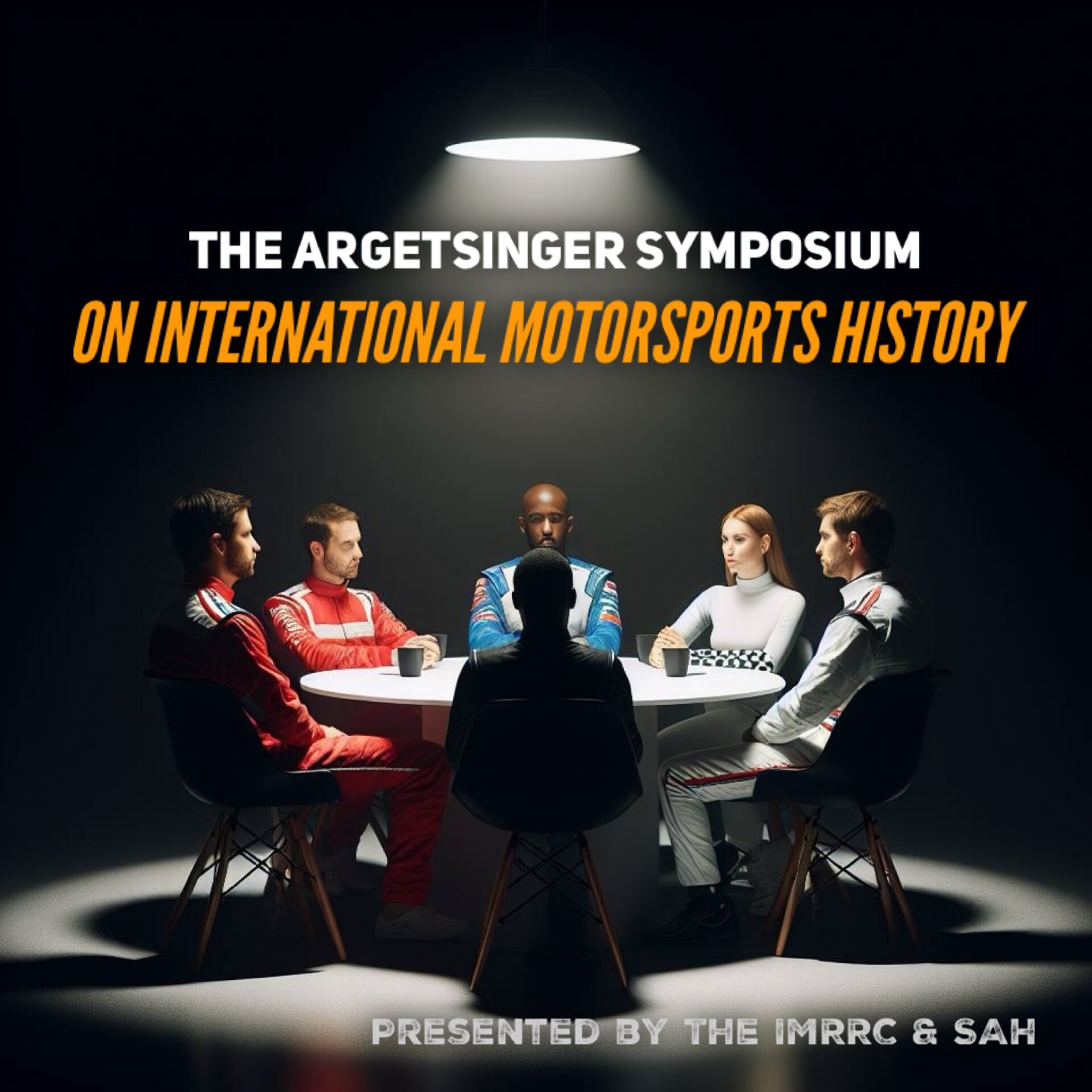 The International Motor Racing Research Center (IMRRC), partnering with the Society of Automotive Historians (SAH), presents the annual Michael R. Argetsinger Symposium on International Motor Racing History. The Symposium established itself as a unique and respected scholarly forum and has gained a growing audience of students and enthusiasts. It provides an opportunity for scholars, researchers and writers to present their work related to the history of automotive competition and the cultural impact of motor racing. Papers are presented by faculty members, graduate students and independent researchers.The history of international automotive competition falls within several realms, all of which are welcomed as topics for presentations, including, but not limited to: sports history, cultural studies, public history, political history, the history of technology, sports geography and gender studies, as well as archival studies.
The International Motor Racing Research Center (IMRRC), partnering with the Society of Automotive Historians (SAH), presents the annual Michael R. Argetsinger Symposium on International Motor Racing History. The Symposium established itself as a unique and respected scholarly forum and has gained a growing audience of students and enthusiasts. It provides an opportunity for scholars, researchers and writers to present their work related to the history of automotive competition and the cultural impact of motor racing. Papers are presented by faculty members, graduate students and independent researchers.The history of international automotive competition falls within several realms, all of which are welcomed as topics for presentations, including, but not limited to: sports history, cultural studies, public history, political history, the history of technology, sports geography and gender studies, as well as archival studies.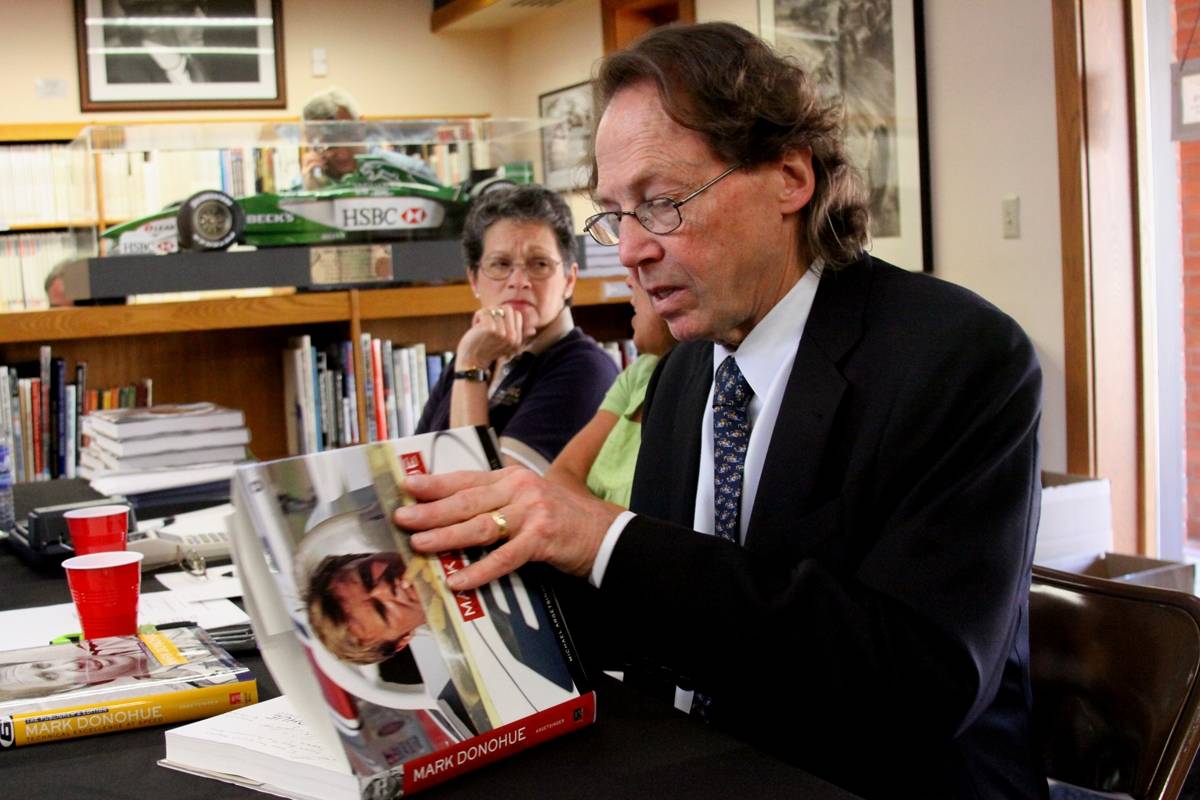 The symposium is named in honor of Michael R. Argetsinger (1944-2015), an award-winning motorsports author and longtime member of the Center's Governing Council. Michael's work on motorsports includes:
The symposium is named in honor of Michael R. Argetsinger (1944-2015), an award-winning motorsports author and longtime member of the Center's Governing Council. Michael's work on motorsports includes:


